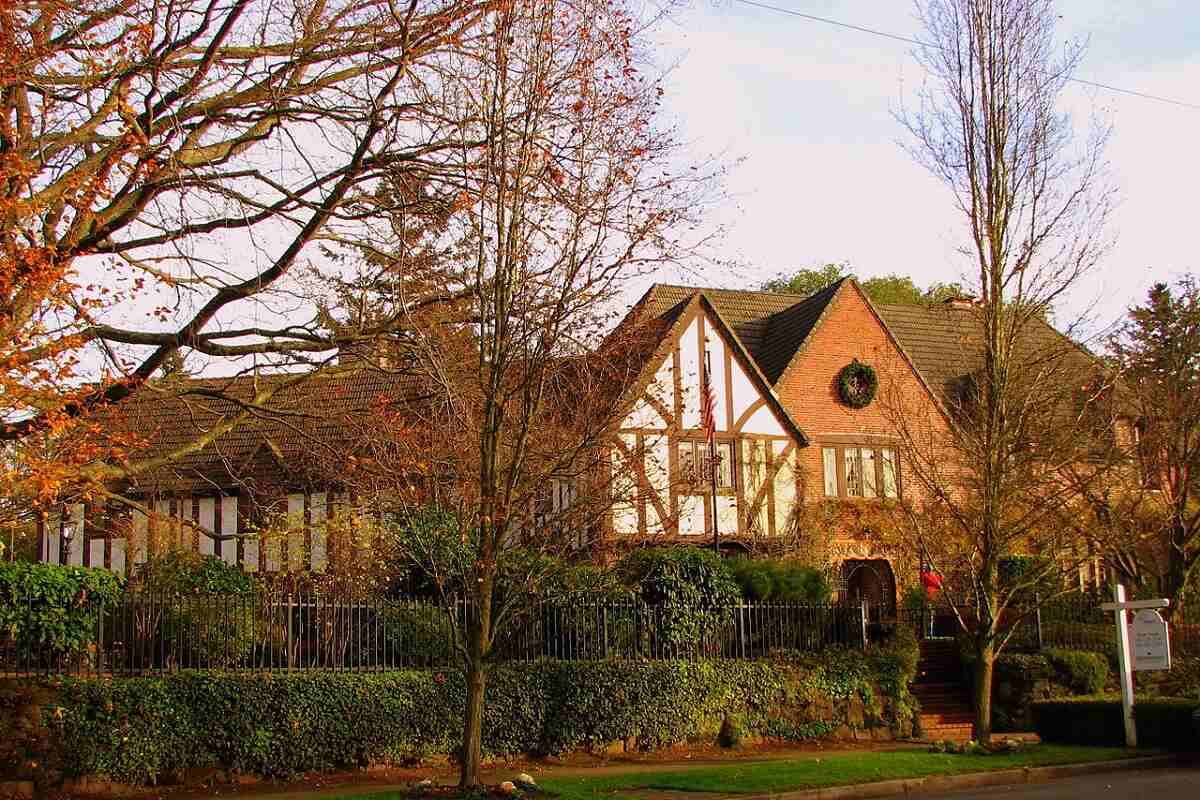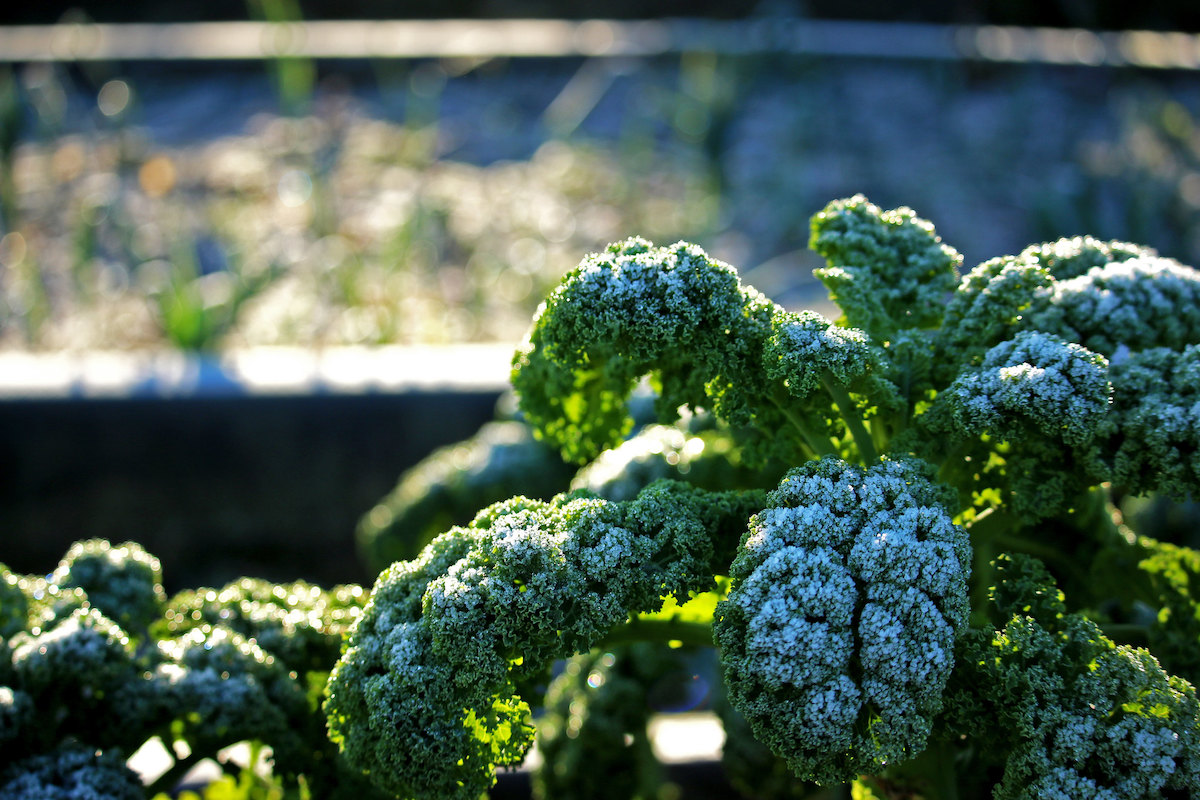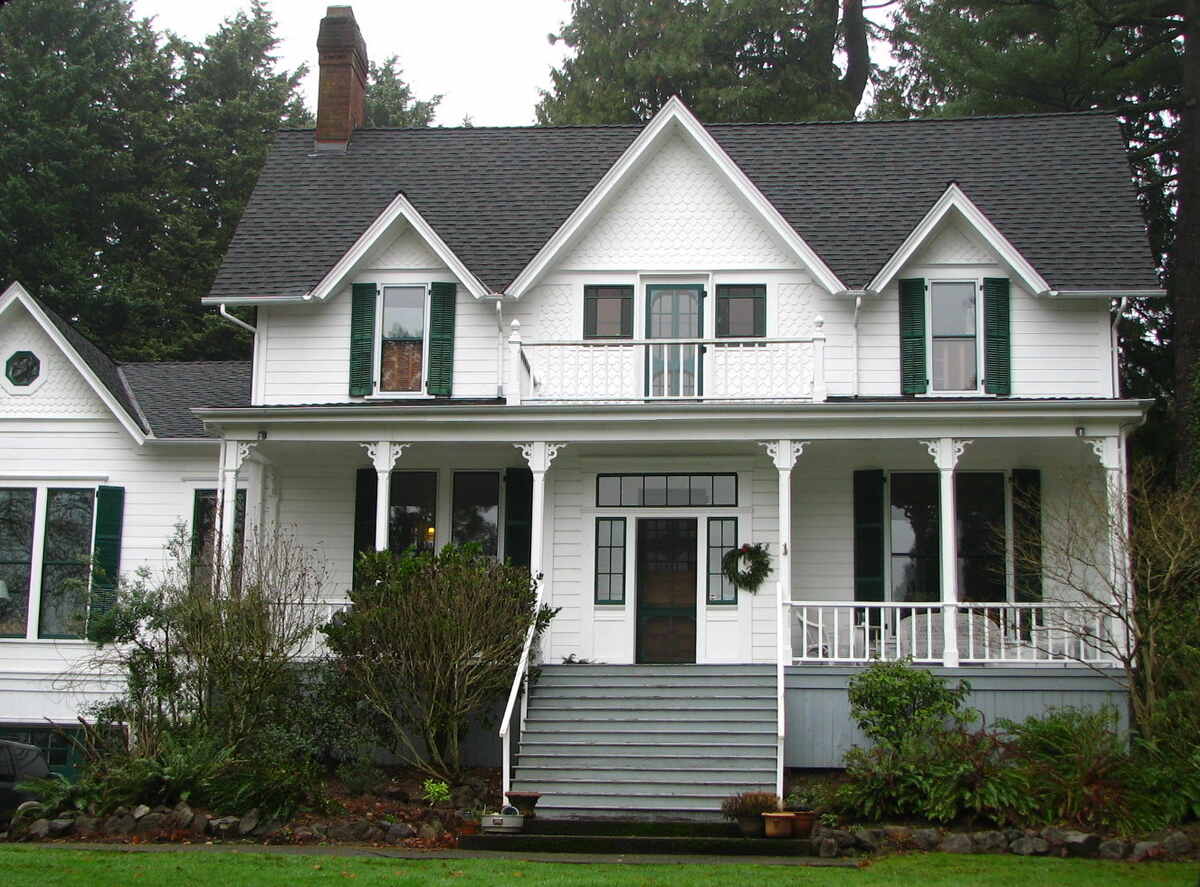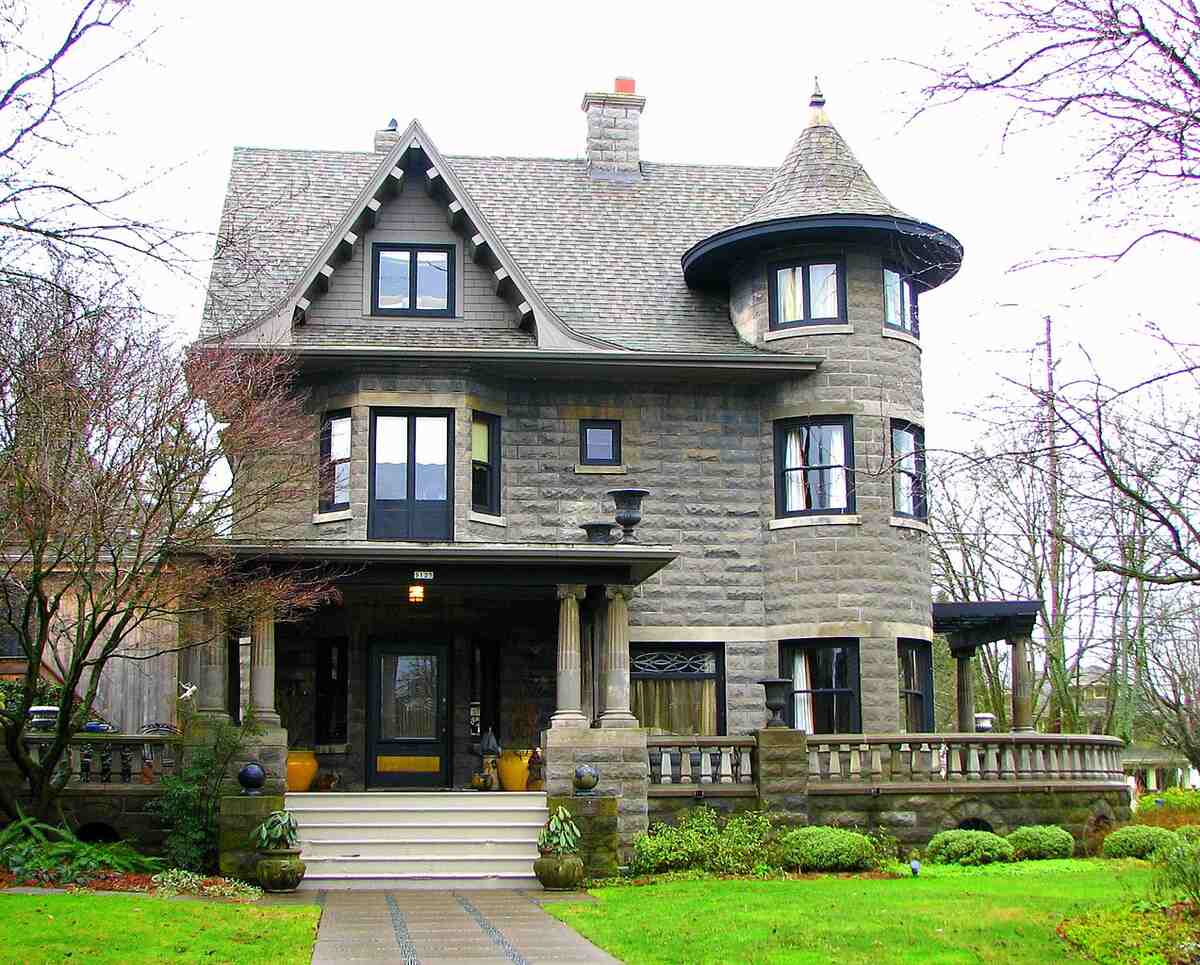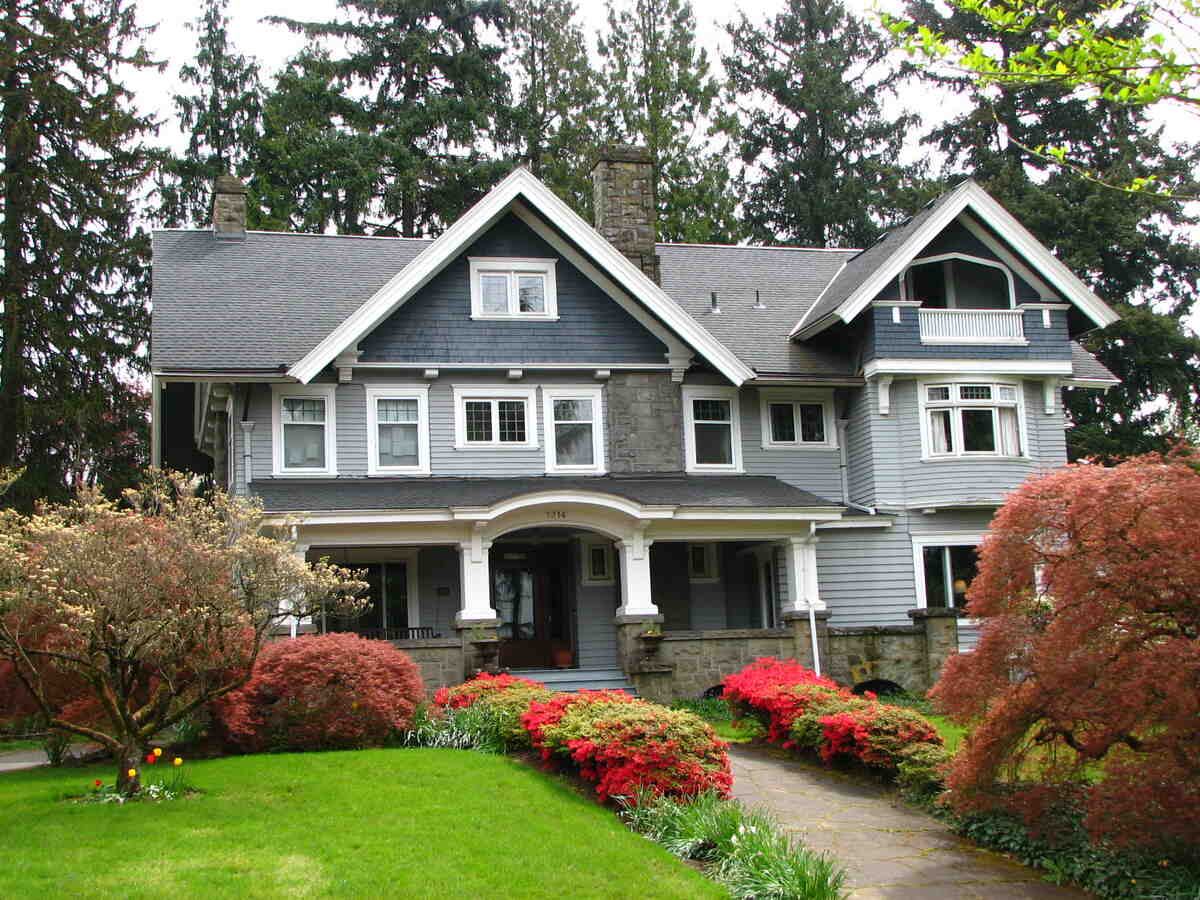
In Portland, the cooler temperature in the 60s and 70s in early October make it the perfect time to prepare your lawn for next spring. As a homeowner, you may think that fall lawn care is less needed due to all the summer mowing you did. But the opposite is actually true.
Fall is the perfect time of the year when the grass is absorbing moisture, energy, and nutrients to prepare for the long and harsh winter months. By giving your lawn the attention it needs now and heeding these fall lawn care tips, you’ll have a healthy and lush green lawn come spring.
1. Adjust Your Blades
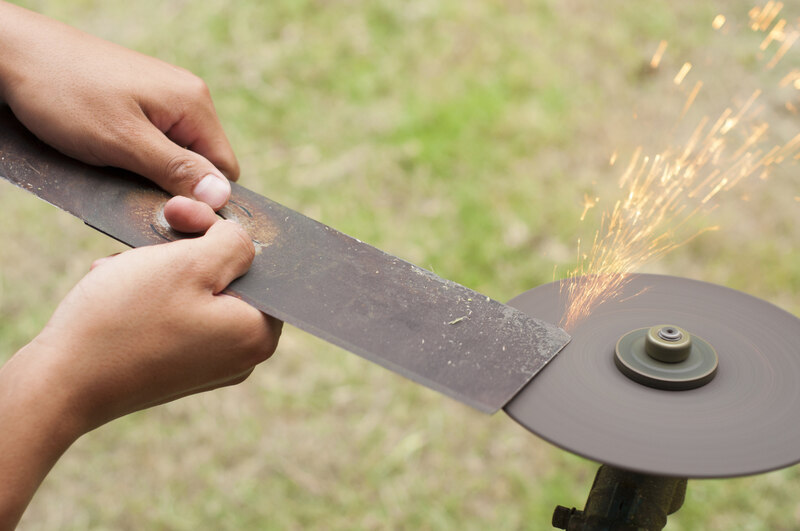
As fall comes to a close, lower your blades on your mower to the lowest setting and cut two last times. This will let the sunlight reach the crown of the grass more easily, and there will be less grass leaf to turn brown in the winter.
As your lawn needs it, keep on watering and mowing throughout the fall months.
2. Rake Your Leaves
No one really likes to rake leaves, but it’s necessary for good lawn health. One thing is not to wait until all the leaves have fallen off the trees. This is because the leaves will soak in all the rain and morning dew, causing them to stick together and form a thick mat over your lawn.
If you don’t remove these wet leaves, then your grass will suffocate, and you’ll end up with fungal diseases on your lawn.
If you don’t want to break out the rake, our local LawnStarter leaf removal crews will take this fall chore off your to-do list.
See Related:
— 5 Ways to Clean Up Leaves in Your Yard
— How to Rake Leaves (a Step-by-Step Guide)
— How to Use a Leaf Blower (a Step-by-Step Guide)
— What Happens if You Don’t Remove Fallen Leaves
3. Aerate Your Lawn
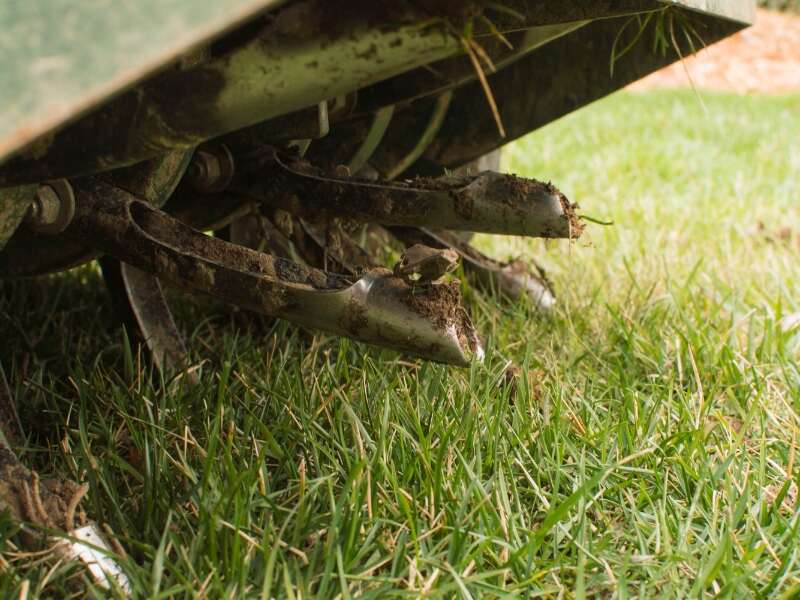
Fall is one of the ideal times to aerate your soil. This will let water, fertilizer, and oxygen reach your grass’s roots.
If you don’t want to aerate by hand, you can rent a walk-behind gas-powdered lawn aerator. It’s a self-propelled machine which will punch holes into the dirt and pull out plugs of soil.
If you don’t want to do the work yourself, you can always hire a lawn care professional. (Hint: LawnStarter offers aeration in Portland and other cities across the U.S.)
See Related:
— When and How Often to Aerate Your Lawn
— How to Aerate Your Lawn
— How to Aerate and Overseed Your Lawn
4. Fill in the Bald Spots on Your Lawn
Fall is one of the best time to fill in any bare spots you have from hard summer usage. The best way is to do it with an all-in-one lawn repair mixture. This is a ready-to-use combination of grass seed, organic mulch, and quick-start fertilizer.
What you’ll need to do: Rake up the soil to loosen it where the bald spot is. Then spread the mixture over the area, lightly compact it, water thoroughly, and then water every other day for two weeks.
In the fall, you should overseed existing turf to fill in the bare patches and thin spots. Because there’s enough moisture and the sun isn’t radiating summer heat, reseeding is more effective.
5. Control Your Weeds
Fall is the best time to control those pesky weeds. Since autumn is when weeds are the strongest in absorbing nutrition, adding weed killer to your lawn will be even more effective.
If you use an herbicide now, then your weeds won’t return in the spring. According to most herbicide manufacturers, the ideal time to apply weed killer is early to mid-fall. The daytime temperatures need to be consistently around 60 degrees.
See Related:
— Guide to Weed Control in Your Yard
— How to Make Homemade Weed Killer
6. Fertilize
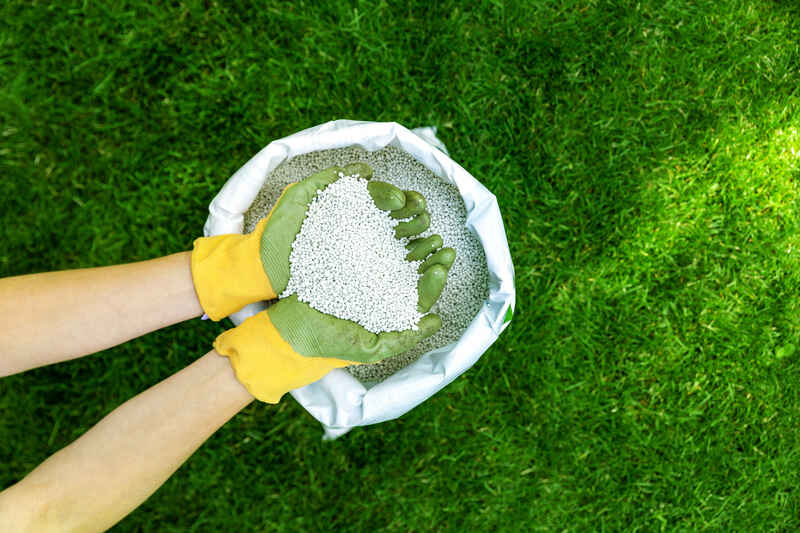
The roots of grass not only need water to get through the winter, but they also need the plant sugars which help to protect the roots from freezing. Plus, the sugars give the grass the energy to grow in the spring. By applying a late-fall application of 24-0-10 of slow-release granular fertilizer, this will help make that happen.
Also, potassium should be added since it aids in disease protection, drought tolerance, root growth and cold resistance. Be careful about spreading the fertilizer near ponds and waterways, since the run-off can contaminate.
By taking care of your lawn in the fall to prepare it for winter, your yard will be beautiful in the spring.
Read More:
— Spring Lawn Care Tips for Portland
— Summer Lawn Care Tips for Portland
— Best Grass Types for Portland, Oregon, Yards
— 12 Low-Maintenance Landscaping Ideas for Portland, Oregon
— Best Grass Types for the Pacific Northwest
— Month-to-Month Lawn Care Calendar for the Pacific Northwest
Need help preparing your lawn for fall? Visit our Portland lawn care page to get in touch with a professional! In addition to Portland, we provide lawn care services in Northwest cities including Seattle and Spokane.
Main Image Credit: Ian Poellet / Wikimedia Commons / CC BY-SA 4.0
